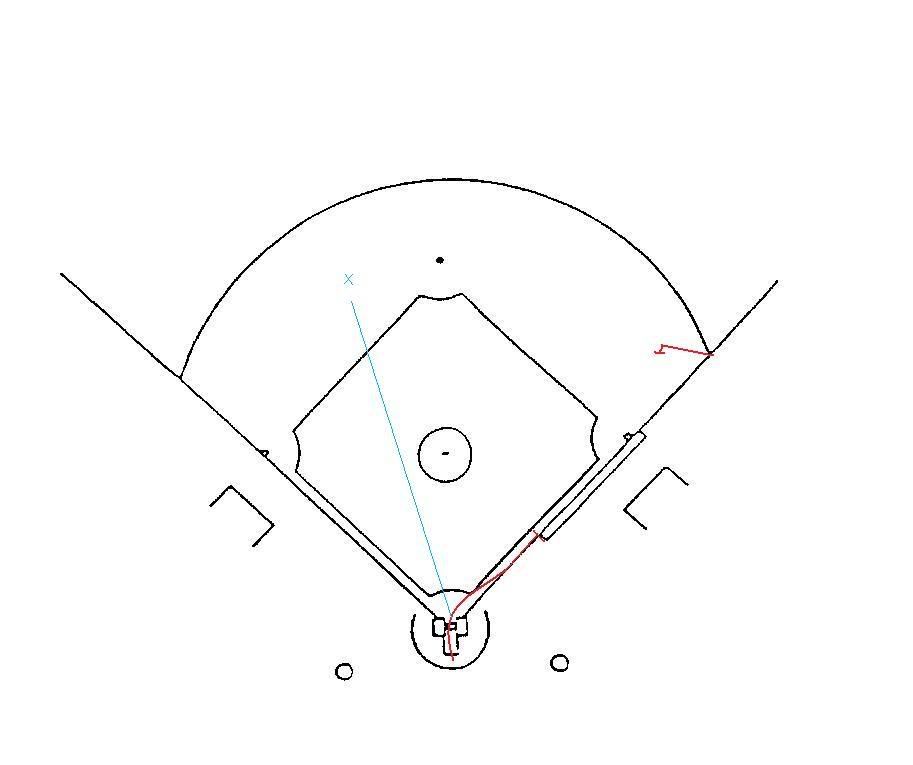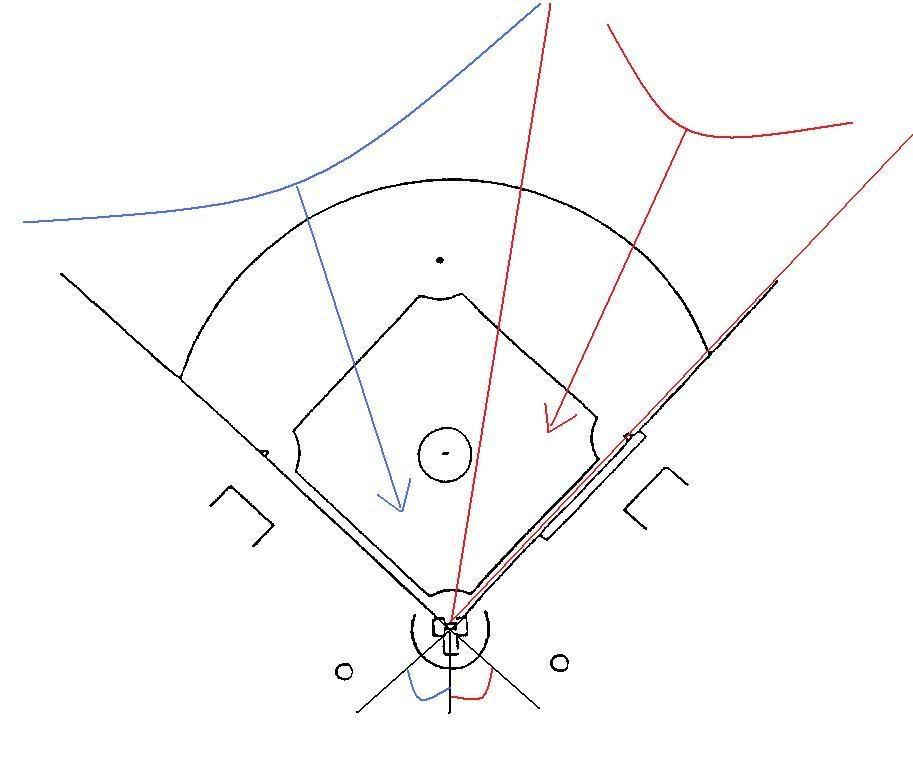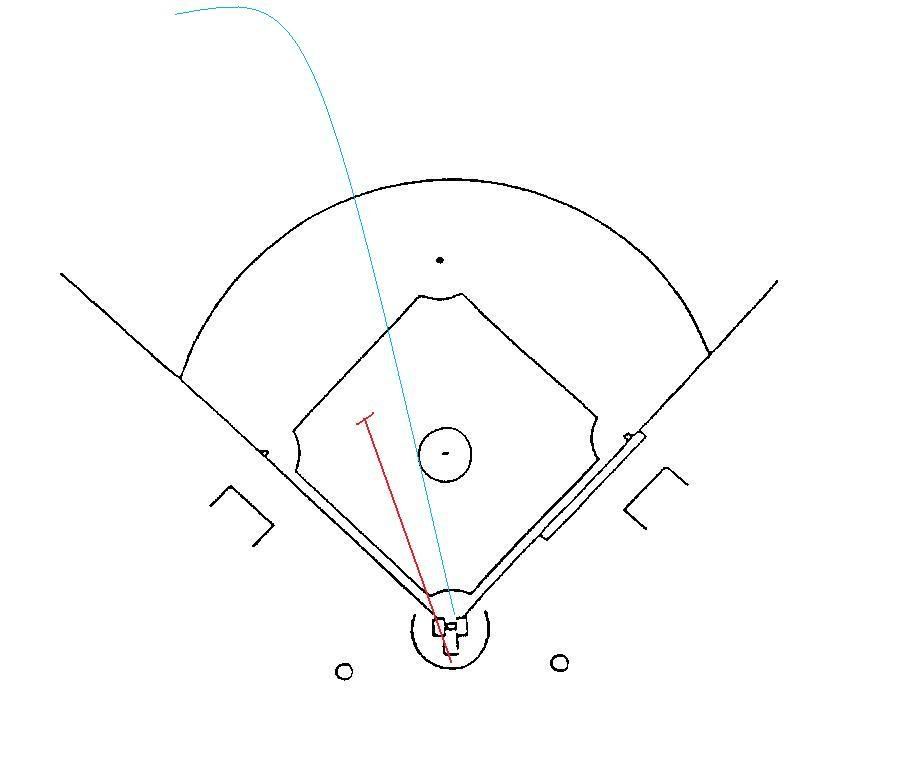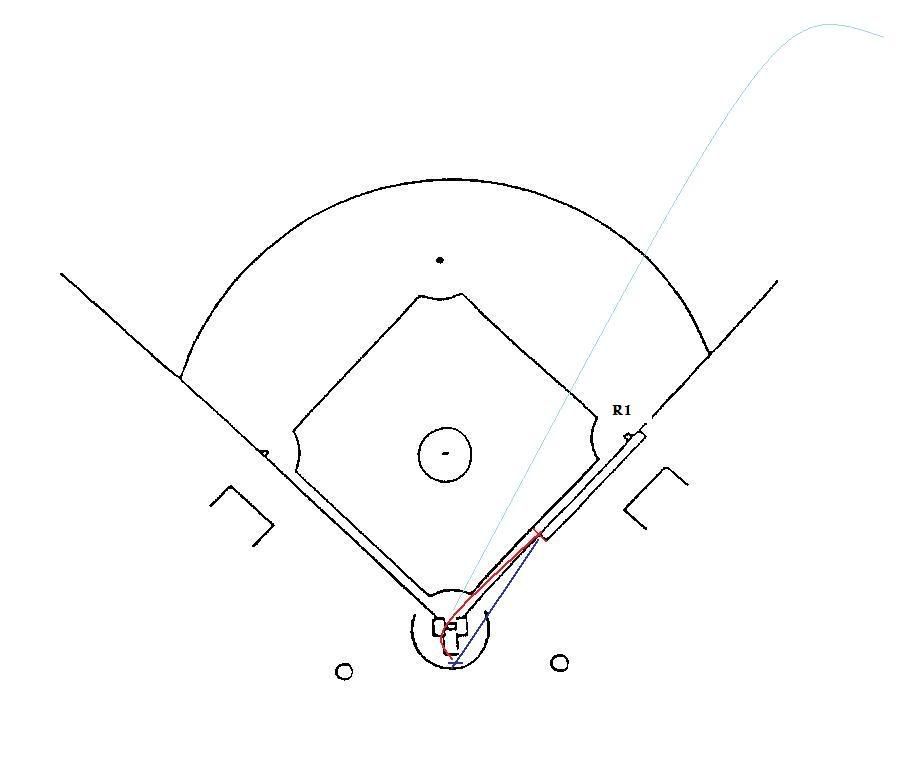Coverage and rotations
On ground balls in the infield with no runners on, you did a good job of getting out from behind the plate, but you need to be on the line instead of inside like you were. Clear the catcher to the left then get back on the line and get up as far as the play will allow and make sure you are set as the play happens. As we discussed, a good time to start shutting it down is when the fielder has secured the ball and is about to release it. This will allow you ample time to be sure you are not moving when the play is happening.

As we discussed, work on getting a better position for plays at the plate. Start at the point of the plate and then read the play as it develops. If it is going to be a swipe tag play then the best position to see this from is on the 3rd base line extended. If it is going to be a collision/plate blocking play then the best position is on the first base line extended. Starting at the point of the plate will allow you to adjust either way as the play develops.

With a runner on 2b only, your only movement on a base hit is to get into position for a pay at the plate. You sometimes started for third base in this situation. Simply take a couple of steps to get to the point of the plate so you can then make the necessary adjustment should a play at the plate develop.
On fly balls/base hits to the right side of the outfield with no runners on base you did a good job of getting out from behind the plate, but you did not go in the right direction, and did not get enough distance. When you bust out from behind the catcher you have two possible responsibilities: the ball if your partner does not go out; or the runner if he does. In either instance, you are headed in the same direction…the direction of the ball. If it is your ball, bust out in the direction of the ball and get as much distance as the play will allow you to, making sure you are set for the play. If your partner goes out, then you are still headed out in the direction of the ball as you are reading that your partner has gone out. When he does go out, continue out in this direction and then stay ahead of the runner and take him to 2B or back into 1B.

You did a good job a couple of times realizing that you had fair/foul responsibilities. When you do have to call a fair/foul, you must be on the line to make a call. If you are off of the line your angle is skewed and you will not be believable.
You did a good job realizing you had a 1st to 3rd responsibility and did a good job communicating to your partner that you were moving. As soon as you read there will be no play at 3rd, head back to the plate and also communicate this to your partner, “I’m going home.”
You had a situation where there was R1 and a deep fly ball to left. You took a couple of steps out from behind the plate toward 3B and stopped. In this situation, keep moving toward 3B until the ball is either caught or falls in. You should keep moving in that direction because if it does fall your next responsibility is R1 into 3B and you will already be heading there instead of reacting late. If it falls tell your partner you’ve got third, if it is caught, retreat to the plate.
On fly balls to the left side of the outfield with no runners on base you can get more distance for the play than you were getting. Bust out from behind the catcher and get as much distance as the play will allow, making sure you are set for the play.

With R1 only you had a deep fly ball to right that took the right fielder toward the line a step or two. If you are going to take this ball then you must tell your partner you are taking it, and then you must get distance toward the play. You ended up calling the catch from the first base line extended and never communicated to your partner that you were taking it. You have to communicate this because if you are taking the ball then you will not be taking R1 into 3B if it falls in for a hit and your partner needs to be aware of that so he can adjust. If you do take responsibility for the ball you can get some distance up the 1B line because your next responsibility is going to be a play at the plate if the ball drops. You have given up 1st to 3rd resp. to your partner so the play will allow you to be a little farther up the line.

On fly balls in the infield you can get a little more distance than you were getting. Get out in front of the plate in the direction of the ball, again only going as far as the play will allow. Likely this will put you about halfway between the dirt of the mound and the dirt circle of the plate area.
You did a good job reacting to your partner staying on the line for the fly ball to the 1st baseman. As we talked about, he should have gone inside on that ball. When he didn’t, somebody had to be responsible for the runner if the ball dropped, and you were in position to do that as you had come inside.
You have to make sure you react to your partner going out on a ball with no runners on. You got lucky because the ball landed foul. Had it landed fair there’s no way you were going to be able to get to 2B in time for a play because you had not moved. Like we talked about, your partner did not help you out much because he should have gone out on a couple of balls that he didn’t, however, this one I’m talking about he immediately turned his back to you to watch the ball which is an automatic signal that he is out on the play and you now have the runner.
You did an outstanding job of letting the catcher take you to the ball on the foul pop up.
Work on the half swing appeal mechanic so it looks crisp. Call the pitch first, and then indicate that he didn’t swing, “Ball, no he didn’t.” Then, if somebody asks for an appeal, step out from behind the plate and take a step toward your partner and loudly ask him, “Did he go?” while pointing with your left arm (so it can not be confused with the pointing of a strike.)
closing remarks edited out